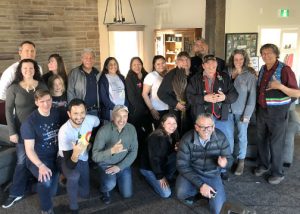 |
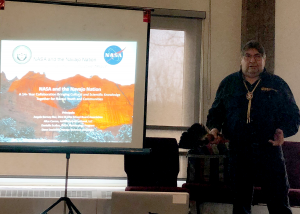 |
|
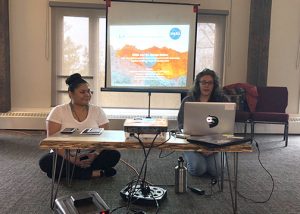 |
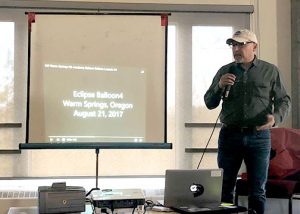 |
|
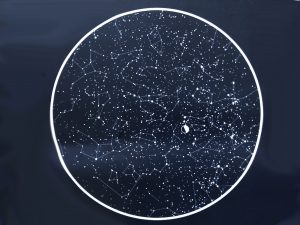 |
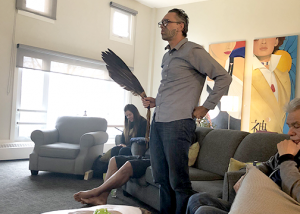 |
By Dr. Julie Comay
I was recently privileged to attend Anongoohns Kendaasiwin – Revitalizing the Art and Science of Star Knowledge, an extraordinary two-day gathering of Elders, Knowledge Keepers, educators and scientists, aimed at developing curriculum through a mutual sharing of Indigenous and Western understandings of the cosmos and our place in it. As Jodie Williams, visionary and indefatigable co-chair of the First Nations Métis and Inuit Education Association of Ontario, described the event beforehand, “Our goal will be to demonstrate how Indigenous knowledge is derived from the land (including the stars and all of creation) . . . we see this as an opportunity to demonstrate how engaging with the process and reciprocity of Indigenous knowledge and how it is shared or transmitted will enhance mathematical learning for all students through this process.”
Organized and led by Jodie with colleagues from the Dufferin Peel Catholic District School Board, the meetings followed on the heels of a leadership camp for Indigenous high school students on “Star Knowledge”. The teenagers, by all reports, had been totally captivated by the deep learning and engaging activities, which brought together a mix of traditional hands-on and contemporary high-tech experiences. By the time I arrived on Sunday, the kids had reluctantly headed home, leaving a group of Elders and Knowledge Keepers from Six Nations, Onigaming First Nation, and Manitoulin Island, along with three young Maori educators and scientists from New Zealand, and Indigenous and non-Indigenous scientists from Canada and the US. It was a dynamic group, and the energy was palpable. Supported by ongoing ceremony and conducted in multiple languages, the conversation shifted between topical science understandings (both Indigenous and Western) and profound discussions of what it means to live ethically as humans in our complicated contemporary world.
Three exceptional presentations provided focal points for the discussions. Te Kahuratai Painting, a Maori scientist with a research focus on chronobiology, spoke compellingly about the deep-seated understandings of time and the natural world embedded in longstanding Maori knowledge of the stars and the moon. Dana Maureen Desiderio of the Navajo Nation, a graduate student at Navajo Technical University, and Daniela Scalice of the NASA astrobiology program eloquently described their collaboration in developing educational resources that bring together the intricate structures of Navajo cosmology with the latest NASA research. We saw clearly how both NASA and the Navajo use story to make sense of the world. Finally, Dr. Juan-Carlos Chavez (Yaqui-Sonora), Director for NASA STEM Initiatives for the Northwest Earth and Space Sciences Pipeline project, and Associate Director of the Washington NASA Space Grant Consortium (University of Washington), held us spellbound with videos of his work with Indigenous youth outside Seattle, combining traditional cultural practices with rocketry and robotics. All three presentations provided glimpses into the rich possibilities of authentically integrated approaches to math and science learning. We heard insights that were deepened and brought into perspective as the Elders and others repeatedly reminded us, with lots of gentle humour, that learning is inseparable from being a good, loving person enmeshed in a web of relations.
It is difficult to do full justice to the recurring themes and complexities that beautifully interwove throughout the two days. What perhaps stood out most for me, in the end, was the realization that to bring Indigenous perspectives and pedagogy into Canadian classrooms involves much more than simply expanding our content knowledge beyond that of canonical Western science. It also requires deep belief in the power of Indigenous understanding to enrich this science, and a radical rethinking of what it means to teach and learn relationally.
For me, the experience was humbling, inspiring, and ultimately hopeful. It was an immense honour to be among this group of thoughtful educators with their passionate commitment to the learning and well-being of children. I am left with the awareness of how much there is to learn, buzzing with questions and excited to bring some of these ideas into the Robertson work, especially as we move forward with our research and thinking about ways to build bridges between indoor and outdoor learning in math and science.
Here are some Tweets from the event:
Students learning about engineering and mathematics from NASA scientists using Indigenous traditional design of fishing weirs during our #StarKnowledgeCultureCamp
Math & Science comes to life when Indigenous knowledge is at the center leading the way@mknrcm pic.twitter.com/EzJqjcB4YV— FNMIEAO.com (@FNMIEAO) April 12, 2019
An unbelievable experience for @HPEschools Indigenous students at the #StarKnowledgeCultureCamp With Anishinaabe, Kanienkehaka, Navajo, Yaqui and Maori elders and knowledge keepers. #LeadershipandLearning #experiential #transformative pic.twitter.com/dagplDVMGC
— Troy Maracle (@TroyMaracle) April 13, 2019
